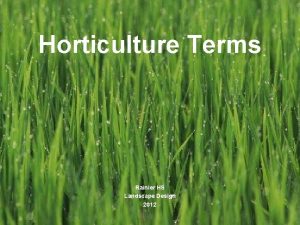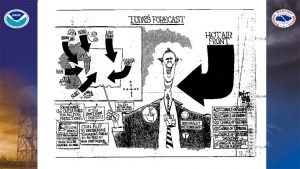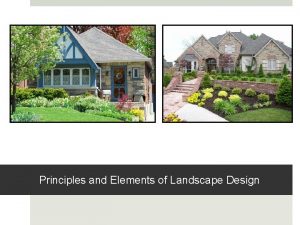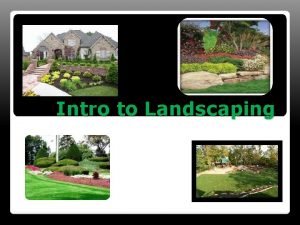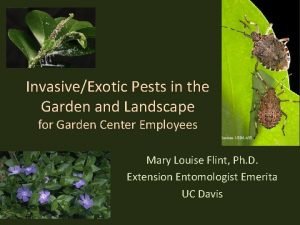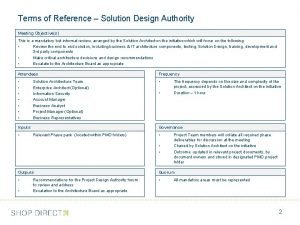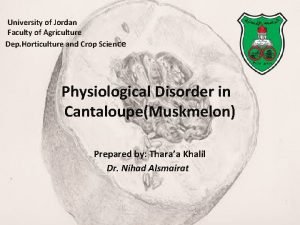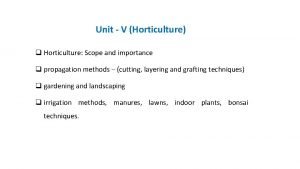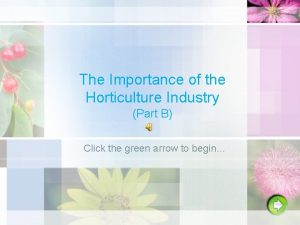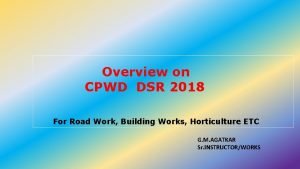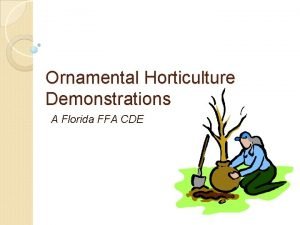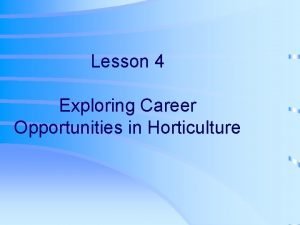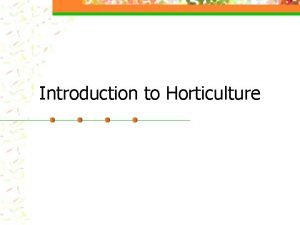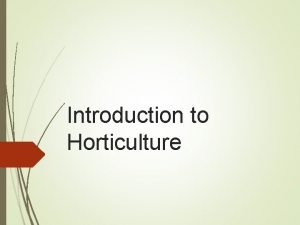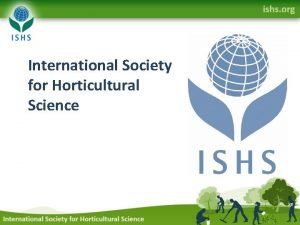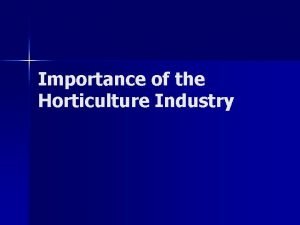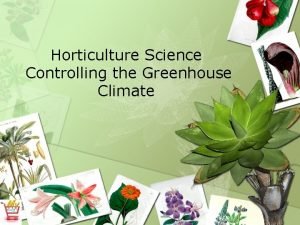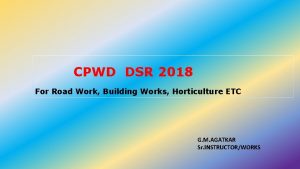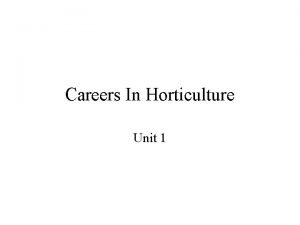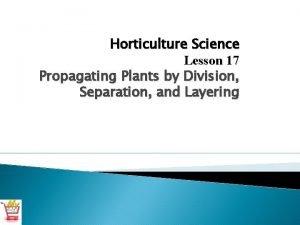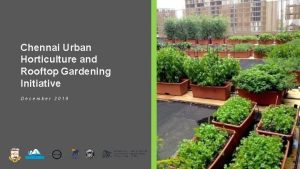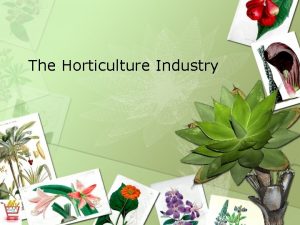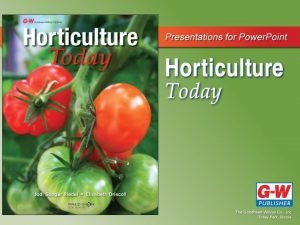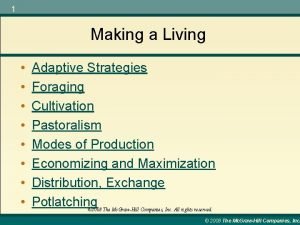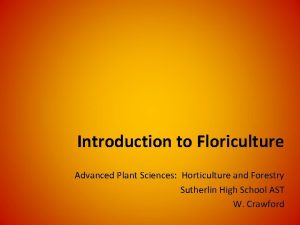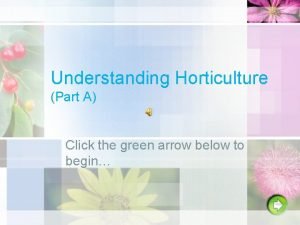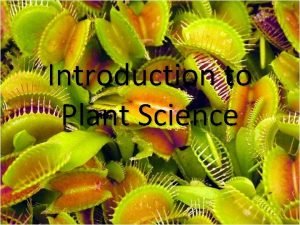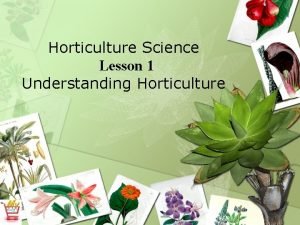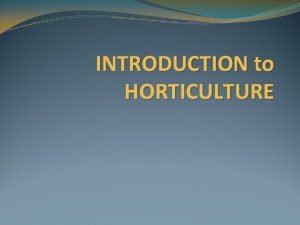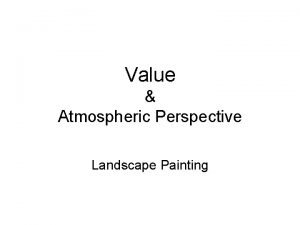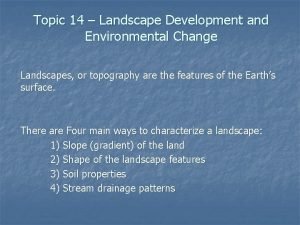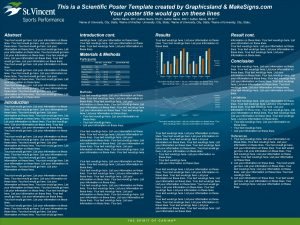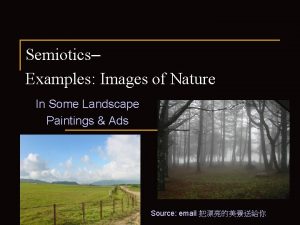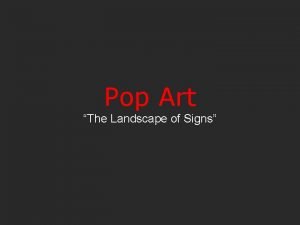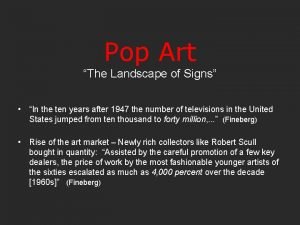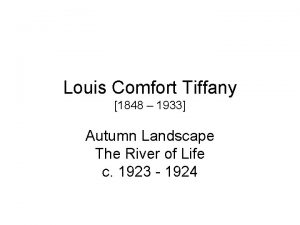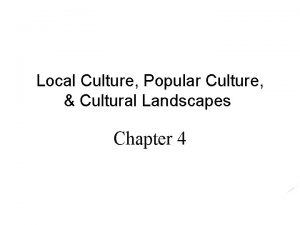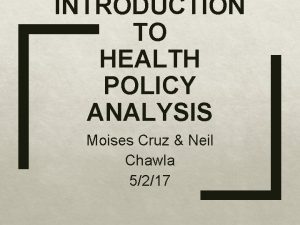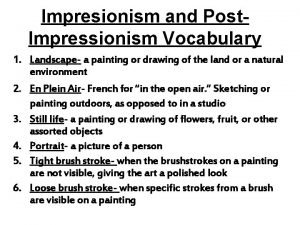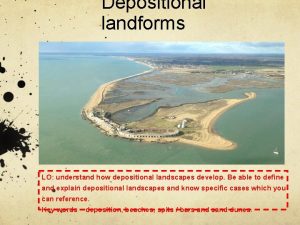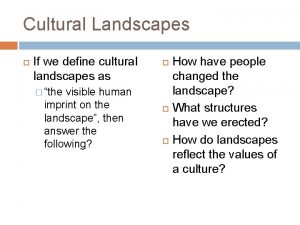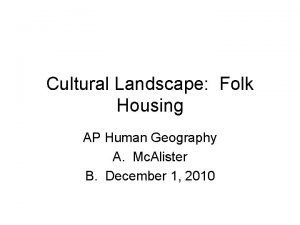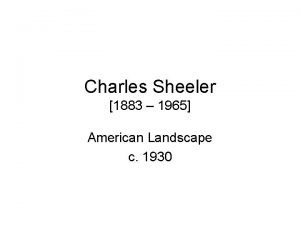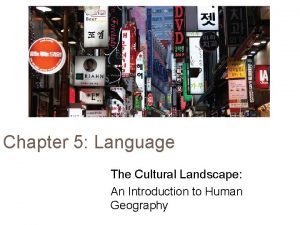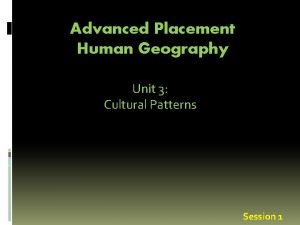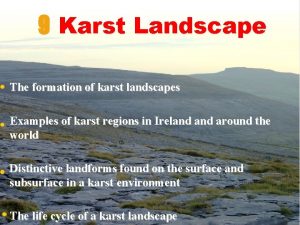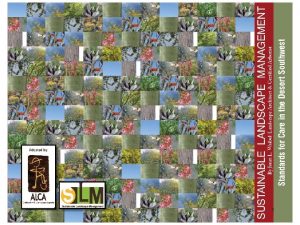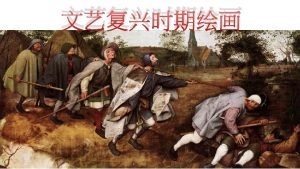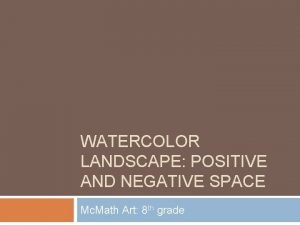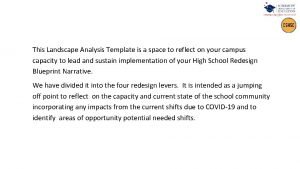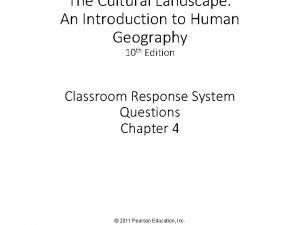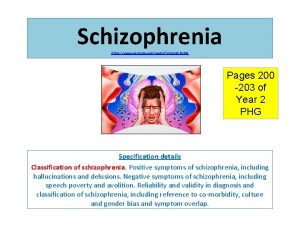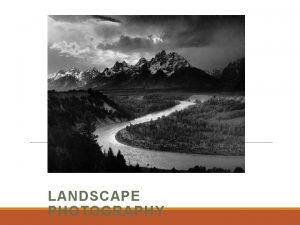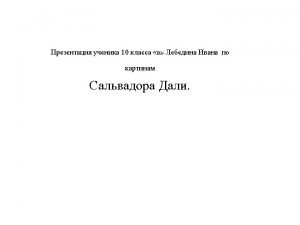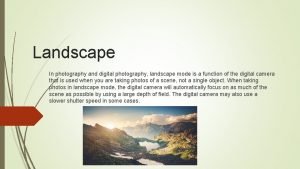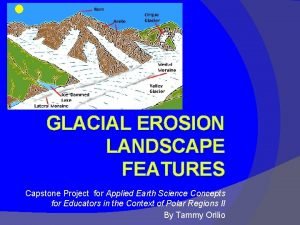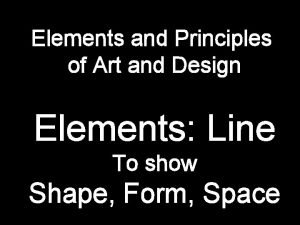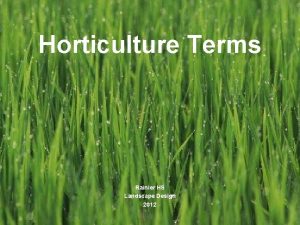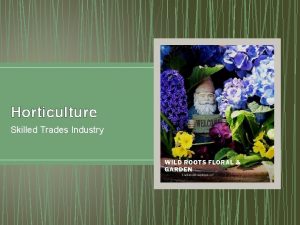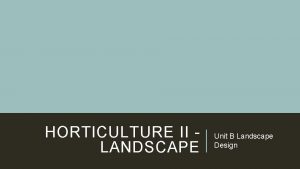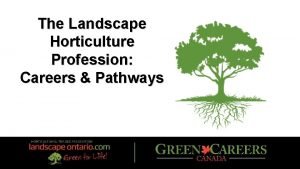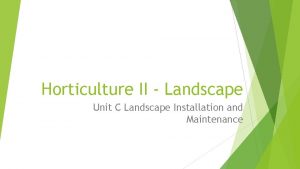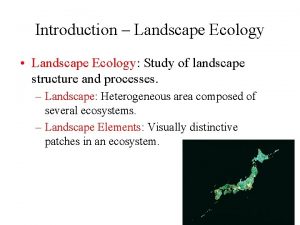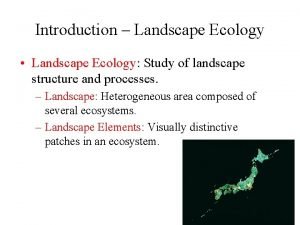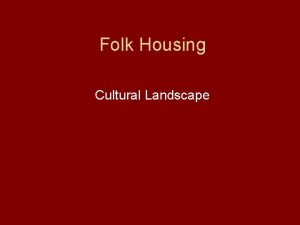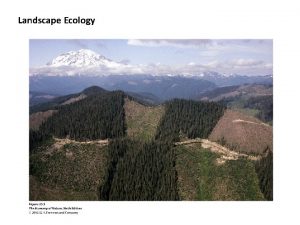Horticulture Terms Rainier HS Landscape Design 2012 Horticulture


















































































- Slides: 82

Horticulture Terms Rainier HS Landscape Design 2012

Horticulture • The ART of cultivating fruits, nuts, vegetables, or ornamental plants. • Horti = garden • Culture = garden culture

Floriculture • The cultivation of ornamental flowering plants.

Botany • The SCIENCE of plants to include anatomy, physiology and taxonomy.

Pomology • The science and practice of growing, harvesting and marketing tree fruits and nuts. Olericulture • The science and practice of growing, harvesting and marketing vegetables.

Annual • A plant which grows, flowers, produces seeds, and dies in one year. Must be replanted each year. Perennial • A plant that grows year after year without replanting. A plant whose roots lives year to year.

Taxonomy • The study of plant names and the identification of plants. Scientific name • The Latin name of a plant giving its genus and species.

Medium (Plural: Media) • Any material, which is used to start and grow, seeds and plants.

Seed coat • The outer covering of a seed. Endosperm • The stored food supply for the young developing seedling, which is contained in the seed. (“rocket fuel”) Embryo (embryonic plant) • The entire plant inside the seed before germination.

Hybrid • An offspring of two different varieties of one plant type, which possesses certain traits of each plant type.

Named varieties • Specific individual strains of one type of plant, which have been named to indicate their particular traits.

Cross Pollination • A process in which pollen (male sex cell) of one plant unites with the egg (female sex cell) of a different plant. Self Pollination • Fertilization of a plant by its own pollen. Male and female flower parts on the same flower.

Hardening Off Process • Gradually subjecting plants to more difficult growing conditions like withholding water and decreasing temperature, this prepares plants for transplanting by reducing transplant shock.

Cotyledons vs. True Leaves • Cotyledons are the first set of leaves that emerge from a seed at germination. • All other leaves are “true” leaves. • Cotyledons = “seed leaves”

Seed Germination • The miracle process when seeds begin to sprout and grow to begin a new plant • Germination occurs when a seed receives the correct amounts of light, temperature and water simultaneously.

Plant Propagation • The process of reproducing or increasing plants. Can be sexual or asexual.

Transpiration • Loss of water through the leaves or stems of plants. Sort of like “sweating” 90% of a plant’s water loss is here. • A normal daily process of plants. Higher water loss on sunny days.

Turgid • A plant whose tissues are swollen, filled with moisture. Not wilted. • Turgid plant = happy plant

Node • The “joint” of a stem, the swollen place where leaves and buds are attached. Roots form here when cuttings are made. Internode • The space between the nodes on a stem.

Callus • Mass of cells which forms around the wounded area of a plant to start the healing process. Similar to a “scab. ” New roots will form in this callus tissue.

Softwood Cutting • A cutting made from a stem whose tissue is softer and not as mature as the older wood. Hardwood Cutting • A cutting made from a current seasons stem tissue, which is mature or harder in texture.

Rooting Hormone • A plant chemical used to help new cuttings to form new roots faster. • Sort of like a “steroid” to enhance growth.

Tissue Culture • “micro-propagation” • The process of reproducing thousands of plants from a few cells taken from the terminal bud tissue of a plant. • “test tube plants” • Must have extremely sanitary laboratory conditions for tissue culture.

Root Division • The physical separation of roots to form new plants from one “mother” plant. Terminal Tip Growth • Softer tissue from the tip of the plant where most of the new growth occurs.

Binomial Nomenclature • The international naming system that gives every plant 2 names, genus and the specie in Latin. • Scientific Name = Botanic Name.

Linnaeus • The Swedish botanist that came up with the 2 name system for classifying plants. • 1750

Genus • The first name of a plant scientific name. A group of plants that are grouped together because of their similarities to one another. (genera = plural). • A NOUN. Specie • The second name in scientific name, more specific in nature. • An ADJECTIVE that describes the genus.

Example: • Acer rubrum : Red Maple • Acer is the noun or genus. • rubrum is the adjective or specie that describes the genus (rubrum = red in latin) • Quercus alba = White Oak • Zebrina pendula, Setcresea purpurea

Cultivars • Another name for a specific plant, same as variety. • Example: There are several cultivars or “varieties”of Red Maple Tree. • “Red Sunset”, “October Glory”

Common Name • The local English name of a plant, which may differ in various localities. • Common names are not precise enough for commercial use.

Taxonomist • A person who studies plant names and the identification of plants as a career or field of study.

International Code of Botanical Nomenclature • A set of rules that are international for naming plants.

Mulch • Any material used to cover the soil for weed control and moisture retention. • Pine straw, pine bark nuggets, cypress shavings

Osmocote • A slow release fertilizer. Allows the plant to feed gradually over a longer period of time. Saves you labor. 14 -14 -14

Herbaceous • Any plant that has soft tissue and does not form wood or bark. A nonwoody plant. Houseplants, annuals & some perennials. Deciduous • A plant which loses its leaves each autumn. It goes dormant in the winter.

Evergreen • A plant which has leaves or needles throughout the whole year.

Petiole • The stalk structure which supports the blade of the leaf. It attaches the leaf blade to the stem.

Simple leaf • A solitary leaf attached to a stem by a petiole. Compound Leaf • A group of leaflets which compose the entire compound leaf.

Monocot • Classification of those plants having only one cotyledon or seed leaf. Grasses, chives and corn are monocots. • Parallel veins. Dicot • A classification of plants having two cotyledons or seed leaves. • Vascular or woody plants.

Leaf Margin • The outer edge of a leaf …. • Serrate, entire, lobed, etc. Root Cap • The actively growing cells at the tip of the plant root.

Stoma • Small pores or holes in the leaf, which allow the plant to breathe and give off moisture. They open and close with day and night.

Lenticels • Breathing pores in the bark of woody stems. They open and close with day and night.

Ventilation • Movement and exchange of air in a greenhouse. Photoperiodism • The response of plants to different periods of light and darkness in terms of their flowering.

Short Day Plant • A plant that blooms in the short winter days. • Some plants can be “tricked” into blooming by giving them short days artificially. Chrysanthemums and Poinsettias

Breaks • New shoots that develop as a result of “pinching”. • Same results as pruning out the terminal bud of a plant.

Growth Regulators • Chemicals that retard plant growth. It slows down the plant growth so they don’t get too tall and floppy.

Root Rot • Most common disease of Poinsettia. Caused by: Bad drainage, Bad ventilation or too much water.

Fungicide • Any substance which destroys or prevents the growth of fungi. • A type of pesticide to control plant diseases.

J. R. Poinsett • The U. S. Ambassador to Mexico who introduced the Poinsettia to America for future production. • Named the plant after himself.

Plant Hardiness • The ability of a plant withstand to the minimum temperature of an area. Plant Form • The outer shape of a tree and it’s branches. The outer silhouette. • Round, columnar, oval, weeping, etc.

Plant Texture • The size and thickness of the plant’s leaves and stems. Fine, Medium, Coarse. Bare Root Plants • Plants sold with no soil on the roots. A. Cheaper B. Very perishable

Balled and Burlapped • Plants- (B&B) Roots in burlap held together by twine. Dug up at a nursery and sold this way. Container Stock • Planted in a basket or plastic; or metal can. Can be planted at any time of the year.

Drip Line of a Tree • The imaginary line where water drops off from the farthest point of branches.

Narrow leaf Evergreen • Evergreen plants with needle-like or scaly foliage. Pines, Junipers. Broad leaf Evergreen • Evergreen plants with broad leaf blade. BLE Hollies and broad leaf plants.

Fascicles • The sheathes or bundles that contain needle like leaves attached to the branch in conifers.

Heeling in • The process of temporarily covering the plant roots when a tree has to be out of the ground for transplanting. The purpose is to retain the moisture around the roots with an organic material such as straw, mulch or soil during transplanting.

Berm • A ridge of soil placed around a newly planted tree to retain water. “a saucer” or “moat”. • Traps the water to stay on top of the root zone.

Ground Cover Plant • Any low growing plant, under 12” tall, that completely covers the ground. • Used in place of grass for large areas (saves labor of mowing) usually planted in mass. Creeping junipers, ivy, monkey grass, etc. Usually very durable plants.

Foundation Plantings • Plants which are used next to buildings to help accent and tie the buildings into the landscape. Usually evergreen.

Specimen Plant • A plant that is used alone for accent or focal point to a landscape.

Soil Conditioner • Organic matter added to the native soil to improve texture, drainage, and overall quality of the soil. Peat moss, pine bark, rotted compost etc.

Hard Pan • The unprepared or untilled soil line. Dense and hard section of soil. The roots cannot penetrate hard pan.

Boundary Plants • Plants used to separate property or boundary lines. Planted in rows. • Can be low or high depending on purpose.

Bulb • A food storage organ. • A plant structure which consists of layers of fleshy scales overlapping each other, such as the onion or tulip.

Separation • Method of propagation that occurs naturally. Reproductive organs of a plant detach from the parent plant to become new plants.

Division • A method of propagation requiring the physical cutting and dividing of plants. Ferns and herbaceous perennials are often divided.

Corms • Swollen underground stem which grows upright, is a food storage organ and a means of reproduction. • Similar to a bulb. • Gladiolus plants.

Rhizomes • Underground stem which produces roots on the lower surface, and extends leaves and flowering shoots above the ground. Iris.

Tubers • A fleshy root which reproduces by growing roots from an “eye” or bud. Potatoes are tubers.

p. H • The measuring scale of a soil’s acidity. • A p. H of 1 -6 is acid. p. H 7 is neutral, and 8 -14 is base. To raise the soil p. H, add lime. • Most plants prefer a p. H of 5. 5 to 7 range.

Leaching • It is when the fertilizer nutrients are leached out (washed out) of soil over time from excessive water. • Caused from excessive rain or watering. • This is why you have to keep applying fertilizers to plants.

Major Elements • Nitrogen, Phosphorus and Potassium are the Major elements all plants need. • N-P-K example: 10 -10 -10 • Required in large amounts. They must be added by applying NPK fertilizer. 1010 -10, or 14 -14 -14, etc. • Also called the Macronutrients

Minor Elements • Elements that plants need in minor amounts. They may or may not need to be added to the soil. • Calcium, boron, iron and others. • Micronutrients!

Landscape Architect • Professionals who integrate art and science, and know how plants and landscape factors will react to the environment around them.

Landscape Contractor • A company or person who deals primarily with the installation of landscapes. They install what the architect designs.

Landscape Maintenance Contractor • A firm that maintains the landscape under the guidelines of a contract. weekly/monthly.

Subcontracting • The hiring of a firm or contractor to complete specialized tasks such as irrigation, tree surgery, etc. nd 2

Site Analysis • Making an evaluation of the landscape site to determine how many of the clients needs can be met. It tells what is present on the site and what is desired.

Branch Collar • The swollen area of a tree where the branch attaches to the main trunk.

Warm Season Grass • Those grasses that grow best in the warm months (80 -90 degrees) of spring, summer and early fall. They grow vigorously during this time and become brown and dormant in winter: Bermudagrass, Zoysia grass, Centipede grass.

Cool Season Grass • Grasses that grow well in the cool months (60 -75 degrees) of the year. They may become dormant or injured during the hot months of summer: Fescue and rye grass are cool season. Annual rye – temporary.

Herbicides • A type of pesticide chemical intended to control weeds. • Pre-emergent: applied before weeds emerge to kill seeds. • Post-emergent: applied after weeds emerge. • Selective: kills only certain species and safe on turf. • Non-selective: kills any plant it comes in contact with.
 Rainier landscape design
Rainier landscape design Mt rainier recreational forecast
Mt rainier recreational forecast Mt rainier eruption simulation
Mt rainier eruption simulation Like terms and unlike terms in polynomials
Like terms and unlike terms in polynomials Unlike terms
Unlike terms Landscaping objectives
Landscaping objectives West 8 landscape architecture
West 8 landscape architecture Objectives of landscape design
Objectives of landscape design What are the 7 principles of landscape design
What are the 7 principles of landscape design Proscape landscape design
Proscape landscape design Elements and principles of landscape design
Elements and principles of landscape design Rhino landscape design
Rhino landscape design Design authority terms of reference example
Design authority terms of reference example Weld joint design
Weld joint design Dep horticulture
Dep horticulture Scope of horticulture
Scope of horticulture Importance of pomology
Importance of pomology Cpwd dsr 2018 vol 2
Cpwd dsr 2018 vol 2 Florida ffa cde
Florida ffa cde List of careers in horticulture
List of careers in horticulture Horticulture buyer jobs
Horticulture buyer jobs Horticulture history
Horticulture history History of horticulture
History of horticulture Hq of international society for horticultural science is at
Hq of international society for horticultural science is at International society for horticultural science is at
International society for horticultural science is at Importance of pomology
Importance of pomology Horticulture climate control
Horticulture climate control Dsr horticulture 2018
Dsr horticulture 2018 Importance of horticulture
Importance of horticulture What is division in horticulture
What is division in horticulture History of horticulture
History of horticulture Urban horticulture
Urban horticulture Horticulture
Horticulture Facts about medicinal plants
Facts about medicinal plants Chapter 4 the horticulture industry answer key
Chapter 4 the horticulture industry answer key Yehudi cohen adaptive strategies
Yehudi cohen adaptive strategies Horticulture
Horticulture What is horticulture
What is horticulture What is horticulture industry
What is horticulture industry Horticulture branches
Horticulture branches What is horticulture
What is horticulture Introduction to horticulture
Introduction to horticulture Vendor landscape meaning
Vendor landscape meaning Atmospheric perspective landscape
Atmospheric perspective landscape Topic 14 landscape development and environmental change
Topic 14 landscape development and environmental change Landscape academic poster template
Landscape academic poster template Semiotic landscape examples
Semiotic landscape examples Pop art landscape
Pop art landscape Pastry case claes oldenburg
Pastry case claes oldenburg What is mobility panaroma?
What is mobility panaroma? Societal marketing concept
Societal marketing concept Tiffany autumn landscape
Tiffany autumn landscape Cultural landscape convergence
Cultural landscape convergence Stolen glimpses essay 400 words
Stolen glimpses essay 400 words Landscape section of a health policy analysis
Landscape section of a health policy analysis Impresionism painters
Impresionism painters Sand dunes landforms
Sand dunes landforms What is the meaning of cultural landscape
What is the meaning of cultural landscape Affordable housing ap human geography
Affordable housing ap human geography Sheeler american landscape
Sheeler american landscape Language
Language Cultural landscape ap human geography example
Cultural landscape ap human geography example Landscape with two poplars
Landscape with two poplars Examples of karst landscapes in ireland
Examples of karst landscapes in ireland Forrester content marketing platforms
Forrester content marketing platforms Arizona landscape contractors association
Arizona landscape contractors association Winter landscape with a bird trap
Winter landscape with a bird trap Positive and negative space landscape
Positive and negative space landscape Landscape analysis template
Landscape analysis template Uniform landscape definition
Uniform landscape definition Youtube
Youtube Digital twin landscape
Digital twin landscape Healthcare landscape
Healthcare landscape Digital landscape model
Digital landscape model Devegetation and defacing of landscape
Devegetation and defacing of landscape Pieter bruegel the fall of icarus
Pieter bruegel the fall of icarus 11 surefire landscape photography tips
11 surefire landscape photography tips Salvador dali landscape near figueras
Salvador dali landscape near figueras Landscape mode photography
Landscape mode photography Landscape hotels world congress
Landscape hotels world congress Landscape art definition
Landscape art definition Erosion occurs when natural forces alter the landscape
Erosion occurs when natural forces alter the landscape Charles sheeler, classic landscape, 1931.
Charles sheeler, classic landscape, 1931.
